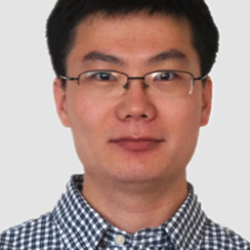
The forthcoming decade will witness an explosion of Internet-of-Things (IoT), which incorporates not only the current mobile devices, but also smart everyday objects equipped with computation, communication and sensing capabilities. IoT will automate human life through a new wave of applications, such as smart buildings, intelligent connected vehicles, 3D user interfaces, and immersive telepresence. But to reach its tipping point, IoT still needs two critical foundations: (i) wireless network architectures that can scale to billions of devices, with wire-speed connectivity and low power consumption; (ii) ubiquitous sensing mechanisms that enable the devices to be aware of ambient locations and micro-activities with high precision.
My research team has been addressing both problems---We design computational models to extract intelligence from wireless signals/channels, which in turn enable high-resolution wireless sensing modalities and high-performance network architectures. This talk will focus on several relevant solutions through the lens of system design, prototyping and experimentation. I will first introduce a ubiquitous sensing system that can locate indoor IoT devices at centimeter precision, by extracting reference signals from conventional ceiling lights. Leveraging commodity wireless interfaces, we have also realized systems that can remotely sense human interaction with the physical world, e.g., sensing the orientation change and touching events on everyday objects, and tracking finger movement to realize 3D in-air input. The second part of this talk will describe how our approach addresses critical problems in millimeter-wave wireless networks, whose capacity can potentially meet the IoT traffic explosion but performance becomes sensitive to the physical environment. Finally, I will summarize the common design principle behind these systems and the implications for building the future IoT infrastructures.
Executive Assistant to the Department Chair
sbattaglia@ucsd.edu | Ph: (858) 534-7013
